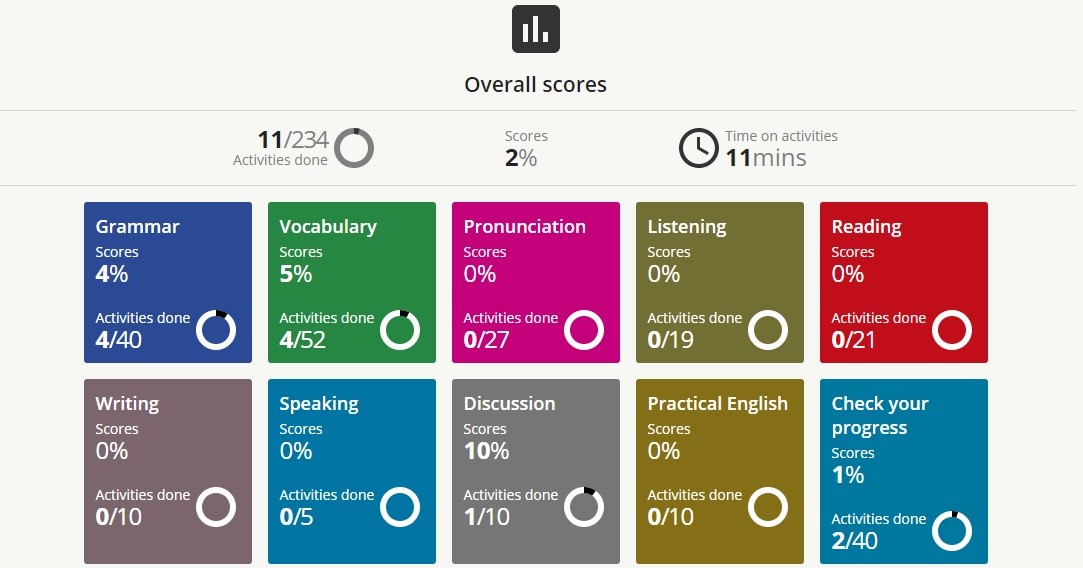If you were one of the 25,000 people who registered for ELTOC 2021, then you might have noticed that Motivation was one of the themes for this years’ online conference, hosted by Oxford University Press. I can speculate why there was a demand for this, having just read a news article informing me that it is a year to date (at the time of me writing this) that the World Health Organisation declared Covid-19 as a pandemic. For many of us, we’re still in a state of lockdown, and so the motivation to do anything is seemingly hard to come by. Naturally, this can affect our work, and so the topic of motivation is not just important for our learners, but for you as teachers, too. This article is aimed at learners, but you will find further links at the end for support specifically for teachers and school management.
Generally, motivation occurs in intrinsic and extrinsic forms. In the context of a language learning environment, an intrinsic driver might be a desire to learn another language for the enjoyment it brings in communicating in a different tongue. Many external drivers in language learning typically revolve around the need to gain a certificate of language competence, either to allow for further study or as needed for a job.
My experience as an English language teacher allowed me to work with students who had both intrinsic and extrinsic motives behind their language learning, and much like a placement test that determines where our learners’ knowledge gaps are from a linguistical point of view, I learnt that exercises and activities that informed me as to where my learners’ motivation lay was just as important as knowing what grammar form they struggled with. So, before we think about how we can motivate our learners, let’s look at how we can discover what motivates them.
1) Personalisation
Motivation is very personal, and so knowing your learners’ reasons for studying won’t just be to your advantage, but also theirs. Motivation to learn will be much higher if there is a genuine interest or significant reason to study. Below is an activity, adapted from Focus on Teaching Online by Nicky Hockly, that will help you to better understand what is meaningful to your learners.
- Choose a topic or subject that is personal to you and create a 1-2 minute audio recording talking about it.
- Share the recording with your learners and ask them to send you 2 or 3 questions about it.
- Respond to your learners’ questions in a new audio recording.
- Ask your learners to now create 1-2 minute audio recordings about their own interests.
- Get your learners to share their recordings within a group of peers and ask each other 2 or 3 questions.
- Get class feedback on what they learnt about their peers; what their interests were, and any surprise discoveries!
This is a great activity to learn more about your learners, and for them to learn more about each other on a more personal level. Creating a sense of community within a class can also feed into your learners’ motivation to study, as the classroom becomes a safer place to try out new things, practice in confidence, and feel part of a support network.
2) Nudge Learners towards their goals
Think about the last time you set yourself a goal to learn or achieve something. How did you stay focused on it? What helped you achieve it? And was it an easy journey to completion? Personally, I get very easily distracted when an idea pops into my head that I want to see out. I can also hit a wall if I’m presented with a problem that I’m not sure how to overcome. Sometimes I can set a structure or instil a routine that helps me stay focused, but more often than not it’s the people around me who help to keep me on track, act as my sounding boards, and offer me words of encouragement when I’m ready to quit!
One of your roles as a teacher is to be there to support learners when they hit a hurdle, but as we head into the world of global skills, we should think instead about nudging our learners towards their own agency, helping them take control of their learning and establish effective study habits. ‘Nudge Theory’ provides subtle positive reinforcement of a behavior we want, and in the context of learning this can be a powerful motivational tool and strategy to help keep our learners on track to achieve their goals.
3) Practical motivation support
Below are some more practical tips and platform suggestions, following along the same thread that my ELTOC talk Motivation: The Driving Force behind Learning delivered on; How to motivate learners, and how to bring in assessment. If you missed it, you can find a link to this talk, along with all other ELTOC webinars, at the bottom of this blog.
4) Learner Diaries, Blogs or Vlogs
Personalisation is a great tool for motivation, and what’s more personal than your own words, thoughts, and feelings? When written in the target language, diaries are a great way to show a learners’ development over time, helping both teacher and student to visualize the progress they have made. They are easy to create, students just need a notebook and pen, a note app on their phone, or a document on their computer or laptop. Voice recording apps provide the option of keeping an audio diary if this feels more achievable than maintaining one in written form. Students can even publish their diaries as a blog or vlog (video diary) using free websites, such as wordpress, blogger, or tumblr, to name but a few.
As well as keeping a general log of their day-to-day lives, students can also use diaries to express their learning goals, e.g:
By the end of this month, I will…
- Be able to write an e-mail to my friend
- Have learnt 20 new words
- Know how to talk about my hobbies
All in all, diaries offer a flexible approach to engaging your learners, tracking their progress, and offering them a platform of communication that they are comfortable with, whether that’s text, audio or video.
5) Educational Games for motivation
Whilst the term ‘games’ may not be favourable in some schools’ schemes of work, gamification of learning, whether through warmers, coolers, or general activities, can be greatly motivating for students, simply by making learning fun! Board races, role-plays, and vocabulary activities all offer engaging ways to practice the target language.
If you have a remote set up, then there are still ways of introducing gamification to your lessons. Baamboozle and Kahoot offer free, ready-made games and activities, suitable no matter what age your learners are. You can also create your own games and activities if you want to test learners on any vocabulary, grammar, or other language points they’ve been learning.
As with the learner diaries, games and activities can provide an insight into your students’ language acquisition, without learners feeling like they’re being tested- which in itself can lead to demotivation.
6) Online Practice and LMSs
With the increasing shift towards digital and online learning, so comes the development of course related platforms for revision and practice in an asynchronous manner. Whilst there are plenty of standalone platforms and apps for language learning, providing content that is coherent and connected to a course can help drive learners towards achieving their learning goals that are supported by their input sessions. Learning Management Systems (LMSs) such as Moodle or Canvas do require onboarding at an institutional level, but Online Practice platforms that come with course books are much more readily accessible for individual teachers and learners.
Most platforms can be accessed via mobile devices, making study easily accessible to those who might not have regular access to a computer, and for those learners who love to use their phones! They also provide a digital classroom-community space, bringing together learners and teachers no matter where they are located. What’s more, teachers can assess the language production of their learners by using the data collected by the platform. When shared with their students, this information can again help to drive learners towards their learning goals and offer a chance for reflection on their achievements.

As a final thought, I want to ask you what motivates your learners? If you don’t know the answer to this question, endeavour to find out! Below are some links to support you in this quest…
Oxford University Press offer free Professional Development modules for teachers, including one on Motivation. And for those who missed the ELTOC session, you can watch the recording of Motivation- The Driving Force Behind Learning, here, and Exploring Motivation in the Workplace- Building a motivation map for you and your team, here.
Charlotte Murphy has over 8 years of teaching experience working with Young Learners, Teenagers, and Adults across all levels, from beginner to proficiency. She currently works as a teacher trainer for OUP. Follow Charlotte on Twitter @Charlot89877696!




Dear Respect
At First Become a self employed certified kind teacher after successfully achieved the Master Degree Program. After please you need to start The Important Study Education On Become A Teacher. As a teacher make the approved universal design curriculum and learning and teaching and make the curriculum personal learning for the regular student. The Good Learning and Study is the your hard work. You are the education study certificate respect owner.
Sincerely
Md. Asif Alamgir.
thanks for sharing this post, it’s really helpful !!!
Thank you for this.